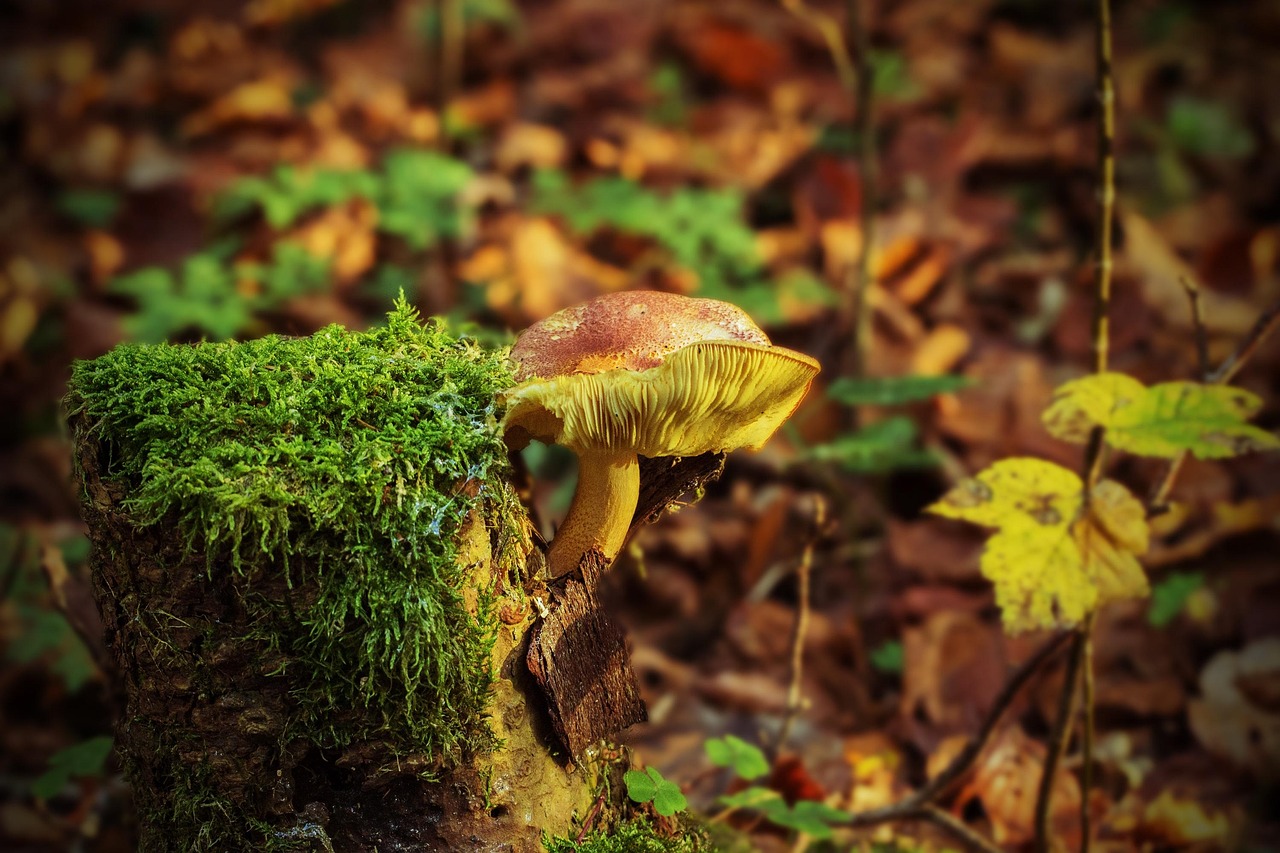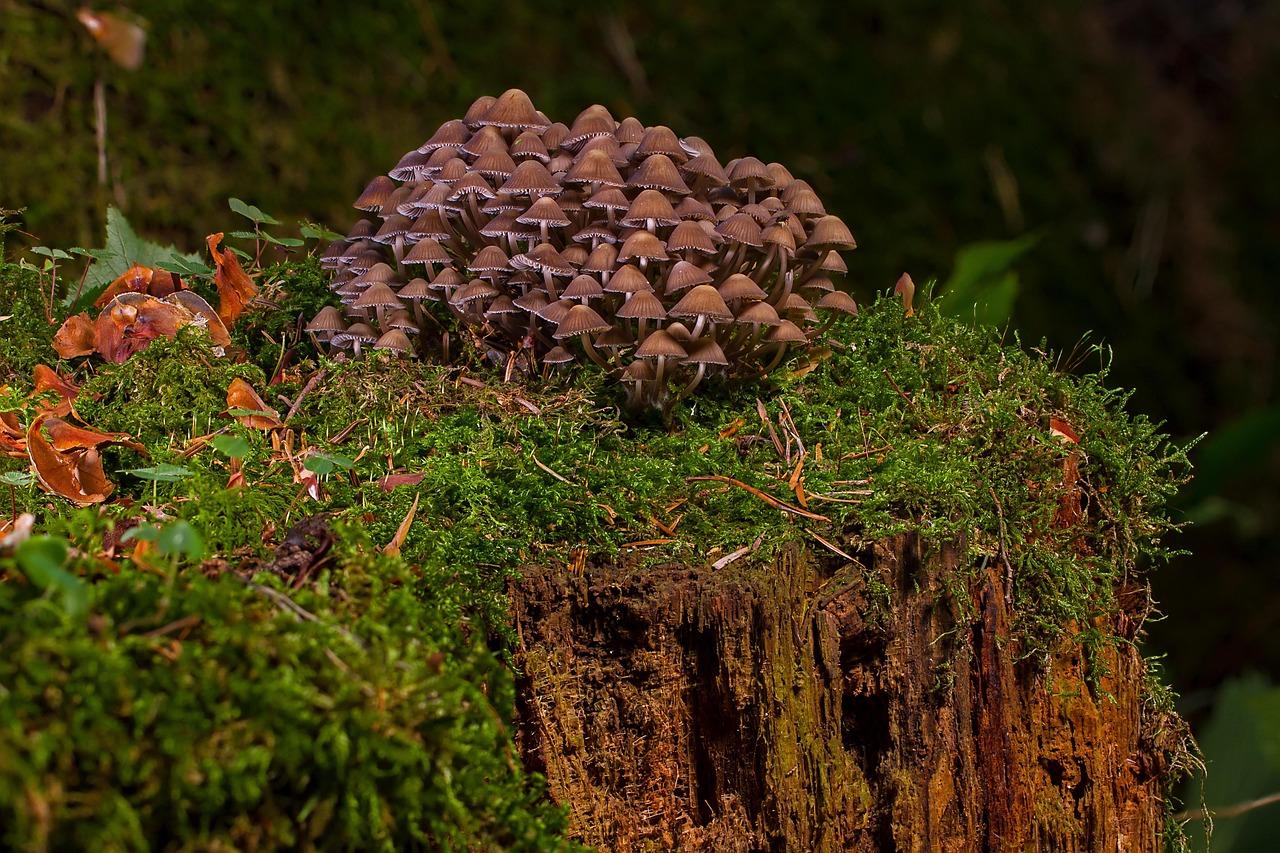Effective tree fungus treatments include proper sanitation, fungicide applications, and biological control methods. These strategies can significantly improve tree health and prevent the spread of fungal infections, ensuring your trees remain vibrant and strong.
Understanding Tree Fungus
Tree fungus is a common issue that many tree owners face. It can manifest in various forms, from surface growths to internal decay. Recognizing the signs of tree fungus early is crucial for effective treatment. Symptoms can include discolored leaves, unusual growths on bark, and weakened branches. If left untreated, fungal infections can lead to severe damage or even death of the tree.

Fungi thrive in moist environments and can spread rapidly. They can enter trees through wounds, cracks, or natural openings. Once inside, they may disrupt the tree’s ability to transport water and nutrients, leading to further complications. Understanding how these fungi operate is essential for developing effective treatments.
Common Types of Tree Fungi
There are several types of fungi that affect trees. Each type has its own characteristics and requires different treatment approaches. Here are some common tree fungi:
- Armillaria (Honey Fungus): Causes root rot and is often fatal.
- Ganoderma (Shelf Fungus): Known for its bracket-like appearance and causes wood decay.
- Laetiporus (Chicken of the Woods): Not usually harmful but can indicate underlying issues.
- Fusarium: Affects the vascular system, leading to wilting and decline.
Factors Contributing to Tree Fungus

Several factors can contribute to the development of tree fungus. Understanding these factors can help you prevent infections before they become a problem. Some key contributors include:
- Poor drainage in the soil.
- Inadequate sunlight exposure.
- Excessive moisture due to overwatering or heavy rainfall.
- Physical damage from storms or pests.
Addressing these factors is vital for maintaining tree health. Regular inspections and proper care can make a significant difference in preventing fungal infections.
Treatment Options for Tree Fungus

When it comes to treating tree fungus, there are several effective methods available. The choice of treatment will depend on the type of fungus and the extent of the infection.
The following table outlines some common treatment options:
| Treatment Method | Description | Effectiveness |
|---|---|---|
| Sanitation | Removing infected materials from around the tree. | High |
| Fungicides | Chemical treatments applied to infected areas. | Moderate to High |
| Biological Control | Using beneficial organisms to combat fungi. | Variable |
| Cultural Practices | Improving soil conditions and tree care. | High |
Each treatment method has its strengths and weaknesses. Regular monitoring and maintenance are equally important to ensure the long-term health of your trees. Combining various methods often yields the best results in treating tree fungus effectively.
As you explore treatment options, consider consulting with an arborist or tree care professional. They can provide personalized recommendations based on your specific situation and help you implement an effective treatment plan.
Preventing Tree Fungus
Prevention is often the most effective strategy when it comes to managing tree fungus. By taking proactive measures, you can significantly reduce the likelihood of fungal infections taking hold in your trees. Implementing good cultural practices and maintaining the overall health of your trees is essential.
1. Proper Watering Techniques
Watering is critical for tree health but can also contribute to fungal growth if not managed correctly. Here are some tips for effective watering:
- Water Deeply: Ensure that you water deeply and infrequently. This encourages deep root growth and reduces surface moisture.
- Avoid Overwatering: Monitor soil moisture levels to avoid saturating the soil, which can create a breeding ground for fungi.
- Water Early: Watering in the early morning allows for evaporation and reduces moisture on foliage.
2. Choosing the Right Location
The location of your trees plays a significant role in their health. When planting new trees, consider the following:
- Sunlight Exposure: Ensure trees receive adequate sunlight, as many fungi thrive in shaded, damp conditions.
- Soil Drainage: Select areas with well-draining soil to prevent water accumulation around the roots.
- Avoid Crowding: Space trees appropriately to promote air circulation, which helps keep foliage dry.
Identifying Fungal Infections Early
Catching fungal infections early can make a significant difference in treatment success. Familiarize yourself with common signs and symptoms of tree fungus:
- Leaf Discoloration: Yellowing or browning leaves can indicate stress or infection.
- Unusual Growths: Look for mushrooms, conks, or other growths on the bark or around the base of the tree.
- Bark Damage: Cracks, peeling, or soft spots on bark may suggest fungal activity.
- Wilting or Dropping Leaves: Sudden wilting or leaf drop can be a sign of internal infection.
The Role of Soil Health
Healthy soil is fundamental to tree health. Improving soil conditions can provide trees with the nutrients they need to resist fungal infections. Consider these practices to enhance soil health:
1. Soil Testing
Conducting a soil test can help you understand the nutrient levels and pH of your soil. This information is crucial for determining any necessary amendments.
2. Organic Matter Addition
Incorporating organic matter, such as compost or well-rotted manure, can improve soil structure and nutrient availability. This enhances root health and overall tree vigor.
3. Mulching
Applying a layer of mulch around the base of trees can help retain moisture and regulate soil temperature. However, ensure that mulch does not touch the trunk to avoid moisture accumulation that can lead to rot.
Biological Control Methods
Biological control methods utilize natural organisms to combat tree fungus. These methods can be effective and environmentally friendly. Here are some common biological control options:
- Beneficial Fungi: Introduce beneficial fungi that compete with harmful fungi for resources.
- Bacterial Treatments: Certain bacteria can inhibit fungal growth by outcompeting them for nutrients or producing antifungal compounds.
- Insect Management: Controlling insect populations that may carry fungal spores helps reduce infection rates.
Integrating biological control methods with traditional treatments can enhance effectiveness and promote long-term tree health.
The Importance of Regular Tree Maintenance
Regular maintenance is essential for preventing tree fungus and ensuring overall health. Here are some maintenance practices to consider:
- Pruning: Regularly prune dead or diseased branches to improve air circulation and sunlight penetration.
- Pest Management: Monitor for pests that may stress trees and create entry points for fungi.
- Fertilization: Use balanced fertilizers to promote healthy growth, making trees more resilient to diseases.
By implementing these preventative measures and maintenance practices, you can significantly reduce the risk of tree fungus affecting your landscape. These steps not only enhance tree health but also contribute to a thriving ecosystem in your garden or yard.

Advanced Treatments for Tree Fungus
In addition to basic treatments and preventive measures, there are advanced strategies that can be employed to combat tree fungus effectively. These methods often require careful planning and professional guidance but can yield significant results in preserving tree health.
1. Systemic Fungicides
Systemic fungicides are chemical treatments that are absorbed by the tree and distributed throughout its tissues. This makes them particularly effective against certain types of fungal infections. Here are key points about systemic fungicides:
- Types: Common systemic fungicides include triazoles and benzimidazoles, which target various fungal pathogens.
- Application: These fungicides can be applied as soil drenches or injected directly into the tree, depending on the product specifications.
- Timing: Application is most effective during the early stages of infection or as a preventive measure during high-risk periods.
2. Copper-Based Treatments
Copper-based fungicides have been used for many years to manage fungal infections in trees. They work by disrupting the cellular processes of the fungi. Consider the following:
- Effectiveness: Copper treatments can be effective against a wide range of fungal diseases, including leaf spot and blight.
- Application Method: These can be sprayed onto foliage, making it essential to cover all affected areas thoroughly.
- Precautions: Excessive use of copper can lead to soil toxicity, so it is important to follow application guidelines closely.
3. Organic Fungicides
For those seeking environmentally friendly alternatives, organic fungicides are available. These typically contain natural ingredients that help control fungal growth. Key points include:
- Examples: Organic options may include neem oil, sulfur, and potassium bicarbonate.
- Application: Similar to conventional fungicides, organic treatments may be sprayed or applied to affected areas.
- Benefits: Organic fungicides are generally safer for beneficial insects and have less impact on the environment.
Utilizing Biological Agents
Biological agents can be an effective part of a comprehensive strategy against tree fungus. These agents include beneficial microorganisms that naturally combat harmful fungi. Here are some biological control options:
1. Trichoderma Fungi
Trichoderma species are beneficial fungi known for their ability to suppress pathogenic fungi in soil and on plant surfaces. They work by outcompeting harmful fungi for nutrients and space. Consider the following:
- Application: Trichoderma can be introduced to the soil or applied directly to the tree.
- Efficacy: Studies have shown that Trichoderma can effectively reduce infections caused by various pathogens.
2. Bacillus subtilis
Bacillus subtilis is a beneficial bacterium that can inhibit fungal growth through the production of antimicrobial compounds. Its benefits include:
- Soil Application: It can be applied to soil or foliage, providing broad-spectrum protection against various diseases.
- Sustainable Approach: Using Bacillus subtilis aligns with sustainable gardening practices and promotes overall soil health.
The Role of Tree Resilience
A key aspect of managing tree fungus is enhancing the resilience of your trees. A resilient tree is better equipped to withstand stressors, including diseases. Here are strategies to improve tree resilience:
- Species Selection: Choose tree species that are well-adapted to your local environment and resistant to common diseases.
- Diversity Planting: Plant a diverse range of species to reduce the risk of widespread infections affecting your landscape.
- Nutrient Management: Regularly assess and amend soil nutrients to support robust growth and immunity against diseases.
By prioritizing resilience in your trees, you not only enhance their chances of surviving fungal infections but also contribute to a healthier ecosystem within your landscape.
Monitoring and Evaluation
Regular monitoring of trees is crucial for early detection of fungal infections and evaluating the effectiveness of treatments. Here are some monitoring strategies you can adopt:
- Visual Inspections: Conduct routine visual checks for signs of disease, such as discoloration or unusual growths.
- Disease Diaries: Keep a record of any observed symptoms, treatment applications, and outcomes to track progress over time.
- Professional Assessments: Consider hiring an arborist for periodic health assessments, especially for high-value trees.
By implementing these advanced treatments and monitoring strategies, you can effectively manage tree fungus and maintain the health and longevity of your trees.
Long-Term Tree Health and Sustainability
Ensuring the health of your trees is not just about addressing immediate fungal infections; it is also about establishing long-term sustainability practices. Integrating sustainable methods into your tree care routine can significantly enhance the overall vigor of your trees and minimize the risk of future infections.
1. Soil Health Maintenance
Soil is the foundation of tree health. Maintaining healthy soil conditions is crucial for promoting strong root systems and reducing susceptibility to diseases. Here are some practices that support soil health:
- Regular Testing: Conduct soil tests every few years to monitor nutrient levels and pH, allowing for timely amendments.
- Compost Application: Add compost annually to improve soil structure, enhance microbial activity, and provide essential nutrients.
- Cover Crops: Planting cover crops can prevent erosion, add organic matter, and suppress weeds, contributing to healthier soil.
2. Integrated Pest Management (IPM)
Integrated Pest Management (IPM) is a holistic approach to managing pests and diseases. This strategy focuses on prevention, monitoring, and control, allowing for more effective management of tree health. Key components include:
- Preventive Measures: Utilize cultural practices that reduce pest attraction, such as proper sanitation and plant selection.
- Monitoring: Regularly check for signs of pests and diseases to address issues before they escalate.
- Targeted Treatments: Use biological or chemical treatments selectively to minimize environmental impact.
3. Community Engagement
Engaging with your community can also play a significant role in maintaining tree health. Neighborhoods can work together to share knowledge and resources. Some community strategies include:
- Tree Care Workshops: Organize workshops to educate local residents about tree maintenance and disease prevention.
- Shared Resources: Create a community tool library for tree care equipment, making it easier for everyone to access necessary tools.
- Community Planting Days: Schedule events to plant new trees and promote biodiversity in the area.
Final Thoughts
Treating tree fungus effectively requires a comprehensive understanding of the various methods available and an ongoing commitment to tree care. By employing a combination of preventive measures, monitoring strategies, and advanced treatments, you can significantly enhance the resilience of your trees against fungal infections.
Remember that maintaining tree health is an ongoing process. It involves regular assessments, adapting to changing environmental conditions, and being proactive about potential threats. Through sustainable practices and community engagement, you can create an ecosystem that not only supports the health of your trees but also contributes to the overall well-being of your landscape.
Ultimately, the goal is to foster a thriving environment where trees can flourish without the looming threat of disease. By implementing the insights shared in this article, you can ensure that your trees remain healthy, vibrant, and a valuable part of your landscape for years to come.
